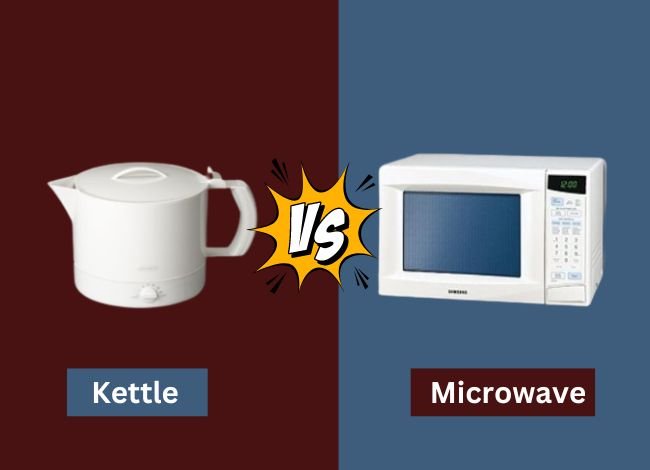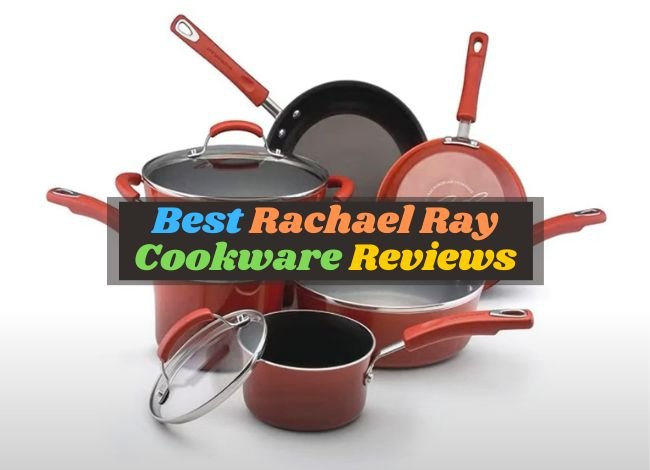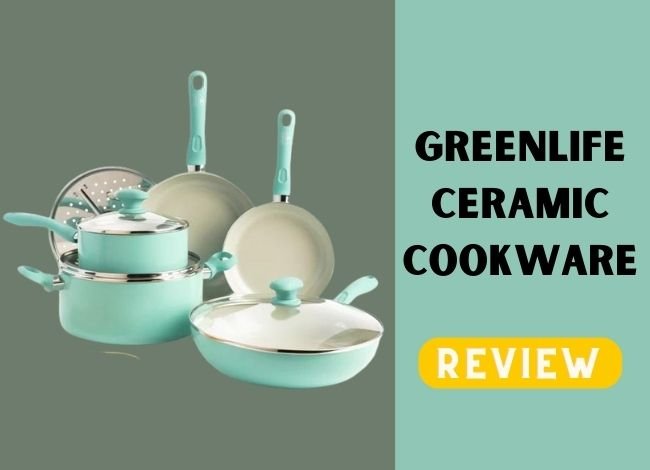Last Updated on February 14, 2025
The way you boil water plays a crucial role in determining the flavor, aroma, and overall experience of your tea. While traditional tea lovers swear by kettles, modern convenience has introduced microwaves as a quick and easy alternative.
But which method truly enhances your tea? In this guide, we’ll explore the advantages and drawbacks of using a kettle vs. a microwave, delving into practical factors, taste differences, and lifestyle considerations to help you choose the best option for your tea-making routine.
Which is Best for Tea: A Kettle or a Microwave?
Deciding between a kettle and a microwave for making tea depends on factors such as time, convenience, and the quality of the tea.
Kettle – The Preferred Choice for Tea Enthusiasts
Tea lovers often prefer kettles for their ability to reach a rolling boil, which is essential for extracting the full flavor and aroma from tea leaves. The precise pour from a kettle’s spout also enhances the tea-brewing ritual, making it a more immersive experience.
✅ Best For: Traditional brewing, full flavor extraction, and tea rituals
✅ Key Benefit: Ensures optimal water temperature for different types of tea
Microwave – The Faster Alternative
For those short on time, microwaves provide a quick and convenient way to heat water. Simply place a mug of water in the microwave and heat it for 1-2 minutes until it reaches the desired temperature. However, microwaves can heat unevenly, which may affect the taste and consistency of your tea. Delicate teas, such as green or white tea, require precise temperatures to prevent bitterness, which a microwave may not always achieve.
✅ Best For: Quick heating when time is limited
✅ Key Concern: May not provide consistent temperature for delicate teas
The Main Difference: How Each Boils Water
The fundamental difference between a kettle and a microwave lies in how they heat water. A kettle, whether electric or stovetop, heats water from the bottom up. This method allows for gradual and even heating, enabling the water to reach boiling point without superheating, which is crucial for developing the tea’s full flavor profile. The rolling boil that a kettle achieves ensures that the oxygen levels within the water are maintained, which is believed to contribute to a better-tasting cup of tea.

In contrast, a microwave heats water by agitating the water molecules throughout the container, causing them to heat up simultaneously. This method can lead to uneven heating and sometimes superheating, where the water can actually become hotter than its normal boiling point without appearing to boil. This can be dangerous as it might lead to sudden bubbling or even explosions when moved. Moreover, this method can result in less oxygenation of the water, which might affect the delicacy of the tea’s flavor and aroma. Understanding these differences can help you choose the right method for your tea-making process, depending on your needs and the type of tea you are preparing.
Kettle vs Microwave: Comparison Chart
| Feature | Kettle | Microwave |
|---|---|---|
| Heating Method | Uses a heating element to boil water | Uses electromagnetic waves to heat food |
| Speed | Fast (boils water in 2-5 minutes) | Moderate (heats water in 2-3 minutes) |
| Energy Efficiency | Efficient for boiling water | Less efficient for boiling water |
| Best For | Making tea, coffee, or instant soups | Reheating and cooking a variety of foods |
| Water Heating Capability | Designed specifically for water | Can heat but not efficiently boil water |
| Cooking Versatility | Limited to heating liquids | Versatile for heating, defrosting, and cooking |
| Ease of Use | Simple operation with a one-button start | Multiple settings, requires some knowledge |
| Safety | Auto shut-off prevents overheating | Can overheat food if not monitored |
| Cost | Affordable, usually lower than a microwave | Generally more expensive than a kettle |
| Maintenance | Easy to clean, minimal maintenance required | Requires cleaning of internal surfaces regularly |
Optimal Temperature Means Everything When Making Tea
Reaching the optimal water temperature is crucial for extracting the full flavor and benefits from the leaves when brewing tea. The traditional method of using a kettle, especially those with temperature settings, allows for precise control over the heat. Different teas require different temperatures; for example, green tea is best brewed at about 175°F, while black tea often requires water at around 212°F.
Using a kettle not only achieves these specific temperatures but also distributes the heat more evenly, ensuring that the entire volume of water reaches the desired temperature. This uniform heating helps in releasing the full spectrum of flavors and aromas from the tea leaves, which are sensitive to temperature fluctuations.
On the other hand, microwaves can heat water quickly, but they do so unevenly, creating hotspots and potentially leading to overheated water that can burn the tea and make it taste bitter. Moreover, microwaves typically do not offer the ability to set specific temperatures, which can result in guesswork and inconsistent tastes if not monitored closely.
In conclusion, while both appliances can achieve the basic requirement of heating water, kettles offer more control and consistency,which is crucial for brewing the perfect cup of tea.
The Difference in Taste is Minimal
While the precision of temperature control in a kettle might suggest a superior taste, the actual difference in flavor between tea made in a kettle versus a microwave is surprisingly minimal for the average tea drinker. In blind taste tests, many people struggle to distinguish between tea brewed in a kettle and tea that was microwaved, provided the water in the microwave was heated to an appropriate temperature without reaching the point of boiling.
The key to successfully microwaving your tea is watching the heating process closely. Unlike kettles, microwaves can bring water to a boil rapidly, often without warning signs like the rumbling sound of a kettle. To avoid overheating, it’s advised to microwave the water in short intervals, checking frequently until it reaches just the right temperature.
Furthermore, for many busy individuals or those with limited kitchen space, a microwave might be the more accessible and convenient option. This convenience, coupled with the subtle differences in taste, makes microwaving a viable alternative for casual tea drinkers who prioritize ease and speed over the ritual of brewing tea.
Ultimately, whether you choose a kettle or microwave, the nuances in flavor can be subtle and often overshadowed by the type of tea, the quality of water, and personal preference. What matters most is how you enjoy your tea and the method that best suits your lifestyle.
It’s Tradition, More Than Anything
When it comes to brewing the perfect cup of tea, tradition often plays a more significant role than mere convenience. For centuries, the kettle has been a central fixture in tea-making rituals around the world. The process of heating water in a kettle allows for a gradual increase in temperature, which is crucial for extracting the full flavor and aroma from tea leaves. This method respects the delicate nature of tea, where the rolling boil of a kettle can be precisely controlled to suit different types of tea—black, green, white, or oolong—each requiring different temperatures to optimize their taste profiles.
Moreover, using a kettle to make tea involves a ritualistic aspect that enhances the tea-drinking experience. The sound of water coming to a boil, the act of pouring steaming water over tea leaves, and the steeping process are all integral to the ceremonial aspect of tea preparation. This tradition is imbued with a sense of mindfulness and patience, fostering a connection to the history of tea cultures across the globe. In contrast, microwaving water for tea is a modern convenience that, while quick, strips away these layers of cultural significance and ritual, potentially altering the taste and therapeutic benefits of the tea itself.
Final Thoughts
The debate between using a kettle and a microwave to make tea ultimately comes down to personal preference and lifestyle. However, if you seek to honor the traditional art of tea making and want to experience tea at its most flavorful and aromatic, the kettle is your best choice. The slow heating process not only preserves the delicate compounds in the tea leaves but also contributes to a more meditative, reflective tea-drinking experience.
While the microwave might appeal for its speed and convenience, it often leads to uneven water temperatures, which can result in a poorly extracted brew that lacks depth and flavor. For those who value the quality of their tea and the experience of making it, the kettle stands out as the superior option. It connects us to the thousands of years of tea history and culture, offering a moment of calm and tradition in our fast-paced modern lives.
So, next time you decide to make a cup of tea, consider reaching for the kettle. Allow yourself the pleasure of engaging fully in the process, from the first pour to the last sip, and discover why this age-old method has stood the test of time. Whether it’s the superior flavor, the aromatic intensity, or the soothing ritual, the kettle remains the timeless choice for true tea enthusiasts.




